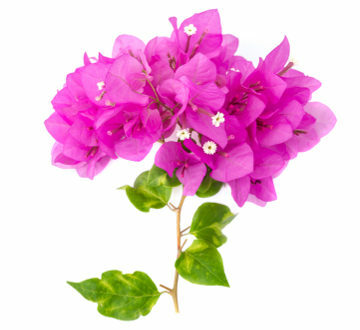THE leaf it is a plant organ with a normally laminar shape and which acts mainly in the collection of light to carry out the process of photosynthesis. Some species, however, have modified leaves that perform other functions besides photosynthesis.
At leaf modifications best known are bracts, cataphylls, cotyledons, thorns, phyllodes and tendrils. Each of these modifications is essential for the plant and performs the most varied functions. See below the characteristics and importance of these structures for the plant:
→ bracts
The bracts are showy and attractive leaves whose main function is to attract pollinators. These leaves are often confused with petals. An example of bract can be seen in plants of the genus Bougainvillea (see figure below).

the pink parts of Bougainvillea arebracts, despite being petal-like
→ cataphiles
Cataphylls are reduced leaves found, normally, protecting the yolk (bud), a region formed by meristematic cells. These modified leaves are present, in most cases, in times when the weather is not favorable. They fall as soon as weather conditions normalize and bud development can take place.
→ Cotyledons
Cotyledons are embryonic leaves responsible for the accumulation or transfer of nutrients that will be used by the plant in its initial development. This structure is extremely important for the beginning of a plant's life, since at this stage there are no leaves that guarantee photosynthesis.
The presence of one or two cotyledons allows the classification of the plant into monocot (a cotyledon) and dicotyledon (two cotyledons). See below the bean, a dicotyledon:

Beans have cotyledons that accumulate reserves
→ thorns
The spines are sharp and lignified structures that arose from the reduction of the leaf surface. Its main function is to protect against excessive water loss, but it also has relative protection against herbivory. An example of a plant with thorns is the cactus.

Cacti, found in warm climate regions, are rich in thorns.
→ Philodes
Extremely reduced leaves, phyllodes have a flattened petiole that plays the role of the leaf blade, even participating in photosynthesis. The phyllodes can be seen, for example, in acacias.
→ Carnivorous plant leaves
The leaves of carnivorous plants present modifications that guarantee the capture of organisms. This complementary way of acquiring organic compounds is important because these plants live in relatively poor soils. As an example of carnivorous plants, we can mention those of the genus Sundew.
→ tendrils
Tendrils are modified leaves that resemble small springs (see figure below). These structures have as their main function to fix the plant, winding themselves on supports. The tendrils can be seen, for example, in chayote and passion fruit.

The main role of the tendril is to ensure the support of the plant
By Ma. Vanessa dos Santos
Source: Brazil School - https://brasilescola.uol.com.br/biologia/adaptacoes-foliares.htm
